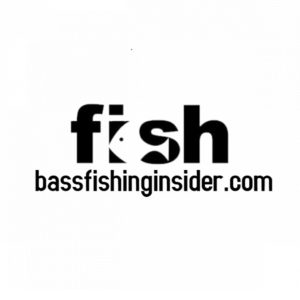
Bass fishing has always been one of the most popular ways to spend time outside, stay healthy, relax, and enjoy the great outdoors while experiencing the thrill of game fishing. However, when new anglers first start to fish for bass, the myriad of tackle options can be overwhelming and costly.
When trying to decide what tackle you need for bass fishing, focus on essentials like the rod, reel, fishing line, tackle box, weights, hooks, and fishing tools. Also, consider the best baits and lures for bass fishing, like topwater lures, jerkbaits, crankbaits, soft plastics, spinnerbaits, and jigs.
Whether you’re just beginning to fish for bass or a seasoned veteran looking to refocus on bass fishing essentials, you’ll benefit from zeroing in on key components critical to your success. Often, options can be overwhelming and daunting. By narrowing down tackle choices to necessary ingredients, you can free your mind (and wallet) from unnecessary add-ons that do nothing more than confuse your mind and cost you money.
Take a look at Bass Fishing Insider’s simple summary of things you need for bass fishing.
What is the Best Fishing Reel for Bass Fishing?
I like to start with a discussion on reels because that impacts your rod choices. Choosing the wrong rod and reel match could severely hinder your fish-catching chances.
There are several reel options when considering the best reel for bass fishing. The most basic reel is the push-button reel and is well-suited for beginner anglers because it is straightforward to learn to use. However, push-button reels restrict anglers because the reels can only handle specific line, are not as “castable” or controllable, can’t accommodate all lures/baits, and are not very durable.
Spinning reels are an excellent option for beginning and veteran anglers for a variety of reasons. Suffice it to say that spinning reels play a huge role in the arsenal of any knowledgeable bass fisherman. They are easy to learn to use, can handle a wide variety of lines, and hold up reasonably well to the rigors of challenging fishing. Additionally, you can fish most styles and tactics (but not all) with a spinning reel. For an EXCELLENT explanation of why spinning reels are good for bass fishing, check out this article on why to use a spinning reel for bass fishing.
Baitcasters are my favorite go-to bass fishing reel for many reasons. Baitcaster reels are typically more durable, allow for more precise and controllable casts, and can handle more line types and heavier line when needed. Additionally, baitcasters are better suited for heavy cover fishing, a commonly used tactic since bass love cover.
Baitcasters are, however, not as effective for lighter lures, lines, and finesse tactics. Here’s an excellent article on why baitcasters are good for bass fishing, including a specific recommendation for a reel that is a great choice for bass fishing, including tons of research and first-hand experience with the reel.
If possible, when looking for the best fishing reel for bass fishing, I would recommend having BOTH a baitcaster and a spinning reel at your disposal. Each reel serves different purposes and can be used for different applications.
What is the Best Rod for Bass Fishing?
If you’re asking yourself how to choose a bass fishing rod, you’ve likely already decided on your bass fishing reel.
Many anglers carry a wide variety of fishing rods with them because different rods are better suited for different tactics, strategies, and conditions. However, a good multipurpose rod fits the bill when embarking on your bass fishing journey or paring down to essentials.
If you’ve selected a spinning reel, you’ll need to opt for a spinning rod. Although spinning rods come in many shapes and sizes, you can’t go wrong with a medium to medium-heavy rod in the six-and-a-half to seven-foot range. A rod with those parameters can be used for most spinning rod and reel applications.
If you’ve opted for a baitcaster, you’ll need to select a casting rod for bass fishing. Again, there are many different casting rod options. Choosing a rod that is suitable for many different tactics is the wisest route to take. I would recommend a 6-6 to 7-foot medium-heavy rod. My personal favorite is the Abu Garcia Veracity Casting Rod. To understand what makes a good bass casting rod and specific rod recommendations, check out this Bass Fishing Insider article with in-depth details on what makes a good bass fishing rod and what to look out for when purchasing a rod for bass fishing.
What Fishing Line is Best for Bass Fishing?
Having a line on your rod and reel to go fishing seems obvious. However, before throwing any line on your reel, there are several things to understand.
Choosing among the three dominant lines (monofilament, braid, and fluorocarbon) can be tricky. Check out our in-depth, easy-to-understand guide on the best fishing line for bass fishing line here.
Insider Tip
If you need a strong abrasion resistance setup but are worried about line visibility, try combining braid with a short fluorocarbon leader. Using the leader technique, you’ll have some advantages of both lines.
What is the best pound test line for bass fishing?
The best pound test line for bass fishing is a 15 to 20-pound fluorocarbon line. When finesse fishing in clearer water, downgrade to an 8 to 12-pound test line. When fishing in thicker cover, upgrade to a 50 to 65-pound braid for a stronger, abrasion-resistant line.
Which Hook Should I Use for Bass Fishing?
Most bass fishing LURES come with their own hooks (treble hooks, single set hooks, etc.). However, you’ll need hooks ready to go if you’re fishing with soft plastics or live bait.
For bass fishing with soft plastics, a 4/0 EWG (extra wide gap) hook is a versatile choice that can be employed in a number of soft plastic bass baits. When finesse fishing (drop shot, wacky rig, etc.), choose a smaller hook, like a 1/0 hook, specifically designed for those applications.
The best hook for live bait and shiner fishing for bass is a “bait hook.” Although there are many options, the Mustad Mustad O’Shaughnessy Bait Hook in the 4/0 size is a perfect live bait hook option. Circle hooks are also good for smaller shiners.
What Weight Should I Use for Bass Fishing?
Choosing the right weight for bass fishing can be tricky. Choose the right one, and you can position your bait near fish longer. Choosing the wrong one can mean that your bait falls out of the strike zone too quickly or doesn’t get to the strike zone fast enough. Don’t miss the mark on weights, or all of your prep time, research, bait selection choices, fishing hotspots, and more could be pointless. Check out Bass Fishing Insider’s comprehensive and easy-to-understand guide to answering the question: What weight should I use for bass fishing?
Are Bobbers Good for Bass Fishing?
If you’re fishing artificial baits, you’ll rarely need a bobber. For live baits, you may need a bobber for shiner fishing if you’re not free-lining them. Don’t overcomplicate this one. Choose a bobber big enough to stay on top and relevant to the size of the shiner that you’re fishing with. Also, pick one that you can see easily. White and red or green plastic or foam bobbers are always a great choice.
Tackle Box and Storage Options for Bass Fishing
Tackle boxes are pretty self-explanatory. Budget and the amount of tackle you’re trying to store or carry on your trip are relevant factors. If you’re in a boat, larger boxes with more compartments make things easier. However, if you’re on foot, choose the smallest bag or box you can handle to carry your lures, hooks, weights, and soft plastics, including necessary fishing tools (see below).
Best Bass Fishing Lures and Baits (10 Must-Haves)
Choosing the right bait or lure is extremely important. The options can seem endless. Although the possibilities seem endless, focus on these ten key baits and lures for bass fishing as a foundation for your tackle needs.
1. Topwater Lures
Poppers, prop baits, walking baits, and more are great lures to have on hand to elicit an exciting topwater bite. Topwater can be a powerful yet underutilized weapon throughout the year. For a detailed look at when topwater works best, check out Bass Fishing Insider’s article, What Time of Year Do Bass Hit Topwater? Topwater lures are a powerful tool for getting bites when nothing else works.
2. Jerkbaits
Jerkbaits are hard plastic baits with treble hooks typically used in clearer water. They can be fished as floating or suspended styles. I’ve seen them twitched and worked slowly or worked rather quickly. Generally speaking, the colder the water, the slower the tempo, and vice versa.
3. Spinnerbaits
Spinnerbaits are a tried and true lure choice that attract attention through vibrations sent through the water by the blades attached to the bait as it moves through the water. It’s a great bait to be fished in and around cover as it is built to bounce or glance off of objects like wood, weeds, and more. Fishing legend Rick Clunn is known to use the spinnerbait as a go-to weapon, as evidenced by his huge St. Johns River Elite win (source).
4. Crankbaits
Crankbaits are hard plastic, treble hook-based baits built to imitate baitfish or crawfish. They are particularly suitable for covering a wide area quickly as they are a moving bait option. Crankbaits come in various shapes and sizes and can be fished shallow, mid-range, or deep. Squarebills, lipless crankbaits, and deep-diving crankbaits are the most popular versions of this lure.
5. Soft plastics Worm
In my experience, the plastic worm is one of the most versatile and effective baits. For a good reason, the plastic worm has been around for ages and is a staple of any veteran’s bass fishing arsenal. Keep some on hand in junebug and green pumpkin colors, and you’ll be well-equipped to fish in almost any body of water. Best fished slowly and methodically. Bass can’t resist!
6. Soft Plastic Fluke
Flukes are a great bait-mimicking soft plastic that can be fished weedless in a wide variety of settings. They can be fished either weighted or weightless. I usually fish them weightless or with minimal weight. They can be twitched quickly on the top of the water to simulate a fleeing baitfish or “jerked” slowly underwater to make the fluke look like a dying baitfish.
7. Soft Plastic Stick Bait
Keep one tied on! The soft plastic stick bait is a must-have for bass fishing. They are perfect when the bite is tough. I also like to use them as a follow-up bait. If I get a blow-up on a topwater or other offering but DON’T catch the fish, I will follow up immediately with a stick bait. Among the industry favorites are the Senko and Berkley’s Power Bait soft plastic.
8. Jigs
Jigs are a great way to slow down and fish for bigger bites. Jigs can be slow-rolled, pitched, or hopped in any water depth. Jigs come as flipping jigs swim jigs, and other variations. Many anglers swear by jigs and rely on them exclusively, especially when looking for lunker bass.
9. Frogs
Frogs are suitable where a topwater lure may generally be effective but not applicable because of cover restraints. For example, matted vegetation presents a perfect opportunity to throw a frog because the hook on a frog is not exposed, which allows the frog to be worked over vegetation without the risk of snags or weeds latching on. Frogs can also be a great way to fish under overhanging bushes or trees. Learning to skip a frog up under a tree can be a deadly tactic for bass waiting to ambush prey falling from trees or entering from the bank.
10. Soft plastic finesse baits.
Finesse worms are necessary and effective when the bite gets tough, or conditions warrant a more subtle approach. Finesse worms can be fished on a drop shot setup, as a shakey head, or even fished wacky rig style. Pitched near or under docks, wood, or other cover, finesse worms can be highly effective for finicky fish.
Fishing Tool Essentials
In addition to rods, reels, line, lures, and more, bass fishermen should round out their tackle needs with the following tools of the trade.
- Line cutters– Be sure to have sharp scissors, cutters, or clippers on hand for cutting line.
- A digital scale – I consider this a must-have. Many states now have trophy catch reward programs. A digital scale is usually required. Plus, it’s nice to get a verified weight pic to show off to your friends and family!
- Extendable net — Having a net on hand makes landing fish easier and safer. Extendable nets are excellent because they can be stored to take up less room.
- Wire cutters — Carry them with you in case you need to cut a hook embedded in something (or, perish the thought, someone). It happens sometimes. Be prepared.
- Needle nose pliers or especially hook remover– A true asset to help you safely and quickly remove difficult hooks from fish.
Final Word. The Bass Line.
When trying to decide what kind of tackle you should use for bass fishing, you’re likely going to face so many options that your head might begin to spin. Narrow down your choices by sticking to the bass fishing essentials above and focusing on what tackle you really need.
By steering clear of the “fluff” and zeroing in on what’s important, you’ll save time and money, which leaves more room for bass fishing!
Tight lines and FISH ON!




